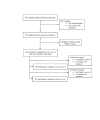Text Messaging and Web-Based Survey System to Recruit Patients With Low Back Pain and Collect Outcomes in the Emergency Department: Observational Study
- PMID: 33661125
- PMCID: PMC7974753
- DOI: 10.2196/22732
Text Messaging and Web-Based Survey System to Recruit Patients With Low Back Pain and Collect Outcomes in the Emergency Department: Observational Study
Abstract
Background: Low back pain (LBP) is a frequent reason for emergency department (ED) presentations, with a global prevalence of 4.4%. Despite being common, the number of clinical trials investigating LBP in the ED is low. Recruitment of patients in EDs can be challenging because of the fast-paced and demanding ED environment.
Objective: The aim of this study is to describe the recruitment and response rates using an SMS text messaging and web-based survey system supplemented by telephone calls to recruit patients with LBP and collect health outcomes in the ED.
Methods: An automated SMS text messaging system was integrated into Research Electronic Data Capture and used to collect patient-reported outcomes for an implementation trial in Sydney, Australia. We invited patients with nonserious LBP who presented to participating EDs at 1, 2, and 4 weeks after ED discharge. Patients who did not respond to the initial SMS text message invitation were sent a reminder SMS text message or contacted via telephone. The recruitment rate was measured as the proportion of patients who agreed to participate, and the response rate was measured as the proportion of participants completing the follow-up surveys at weeks 2 and 4. Regression analyses were used to explore factors associated with response rates.
Results: In total, 807 patients with nonserious LBP were invited to participate and 425 (53.0%) agreed to participate. The week 1 survey was completed by 51.5% (416/807) of participants. At week 2, the response rate was 86.5% (360/416), and at week 4, it was 84.4% (351/416). Overall, 60% of the surveys were completed via SMS text messaging and on the web and 40% were completed via telephone. Younger participants and those from less socioeconomically disadvantaged areas were more likely to respond to the survey via the SMS text messaging and web-based system.
Conclusions: Using an SMS text messaging and web-based survey system supplemented by telephone calls is a viable method for recruiting patients with LBP and collecting health outcomes in the ED. This hybrid system could potentially reduce the costs of using traditional recruitment and data collection methods (eg, face-to-face, telephone calls only).
International registered report identifier (irrid): RR2-10.1136/bmjopen-2017-019052.
Keywords: acute pain; clinical trial; data collection; emergency department; low back pain; mobile phone; patient recruitment; patient reported outcome measures; short message service.
©Anita Barros Amorim, Danielle Coombs, Bethan Richards, Chris G Maher, Gustavo C Machado. Originally published in JMIR mHealth and uHealth (http://mhealth.jmir.org), 04.03.2021.
Conflict of interest statement
Conflicts of Interest: None declared.
References
-
- Emergency department care 2016–17: Australian hospital statistics. Australian Institute of Health and Welfare. [2019-08-11]. https://www.aihw.gov.au.
-
- Committee on the Future of Emergency Care in the United States Health System Board on Health Care Services . Future of Emergency Care Series. Washington, DC: The National Academies; 2006. Hospital-Based Emergency Care: At the Breaking Point.
Publication types
MeSH terms
LinkOut - more resources
Full Text Sources
Other Literature Sources
Miscellaneous


